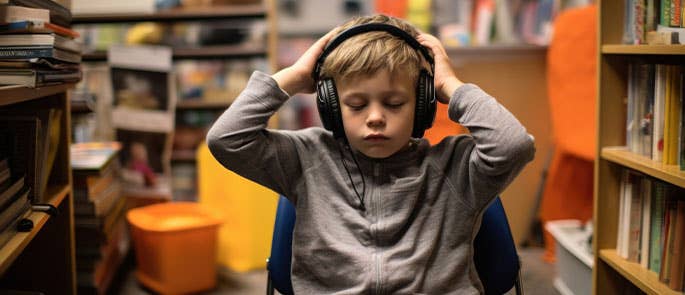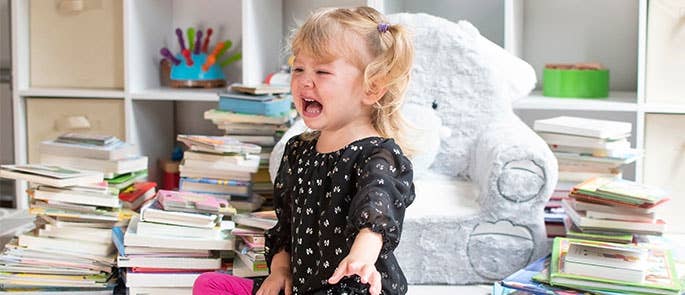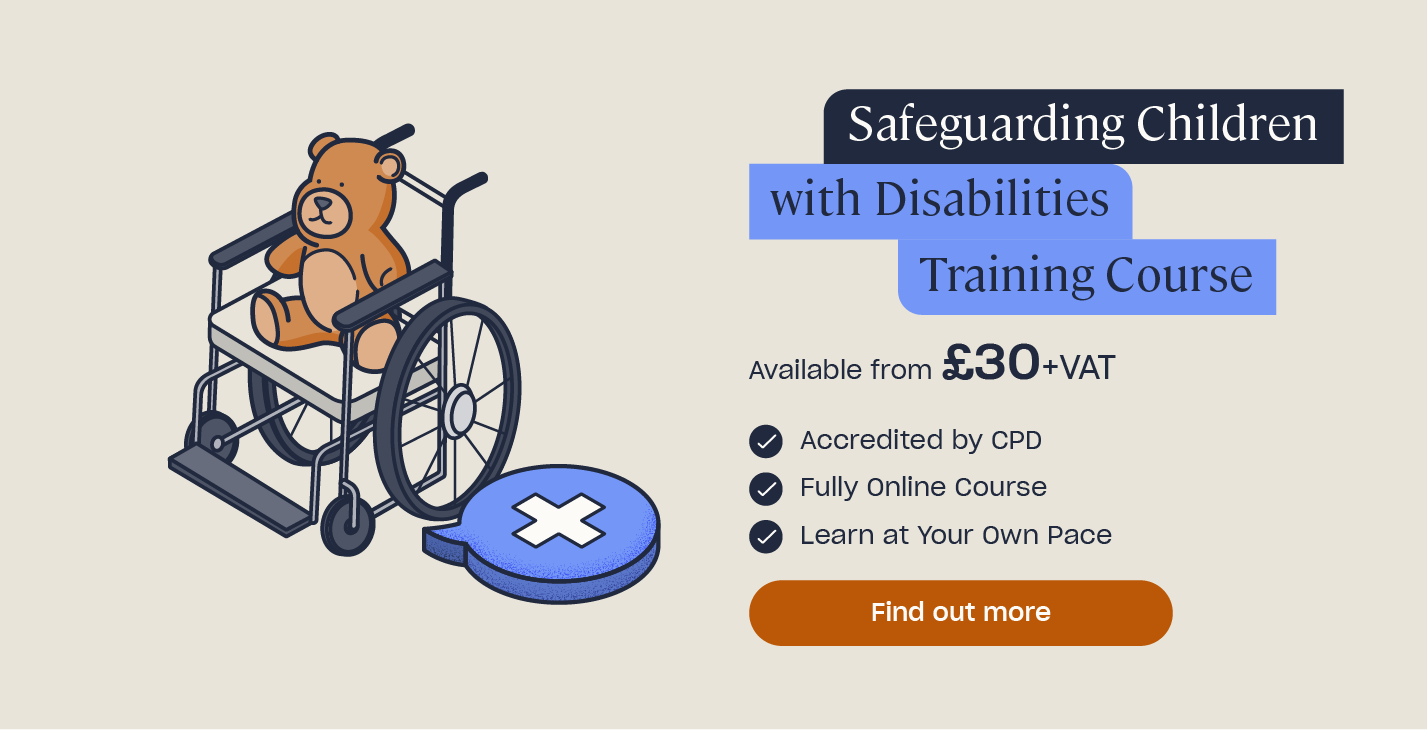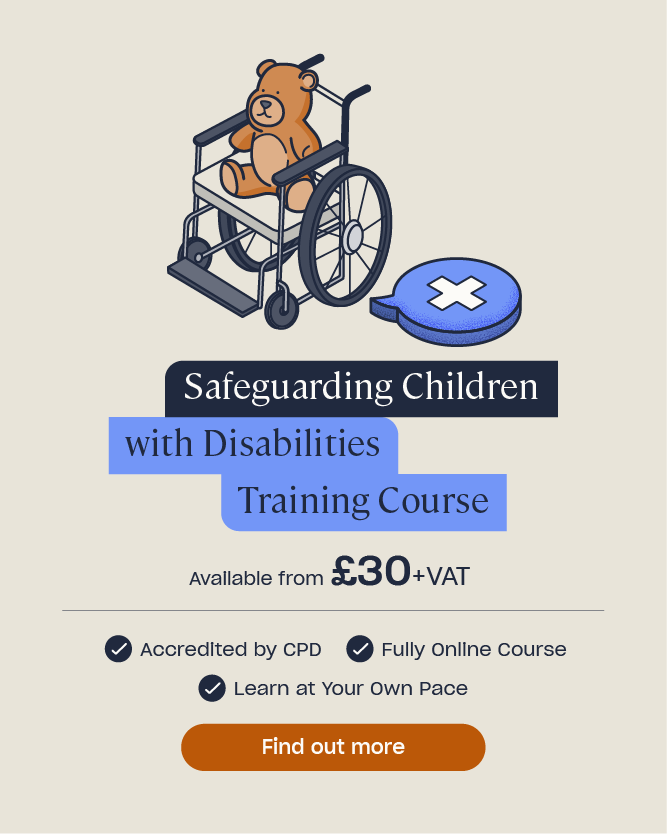Sensory Overload in Children
The environment we live in can often be loud, fast-paced and chaotic – and that can cause us to feel overwhelmed or exhausted. When that happens, we want to escape somewhere more calming and quiet. We might take five minutes to breathe, go for a lie down or even go on holiday to escape the noise. Luckily for most, this feeling doesn’t occur too often, but what happens if you experience these overwhelming feelings on a daily basis and find it difficult to escape them?
For some children – particularly those with ADHD, autism or another type of neurodiversity – sensory overload caused by overstimulation can be frightening, confusing and a hindrance to daily life. As a parent or teacher of a child who experiences sensory overload, it’s important that you understand what might trigger it and how to help a child who may be struggling.
In this article, we’ll look at what is meant by sensory overload and overstimulation, give some examples of situations that might cause sensory overload and provide some useful tips for how to calm a child experiencing sensory overload.
What is Sensory Overload?
Sensory overload is when your brain takes in more information than it can process, causing you to enter ‘fight, flight or freeze’ mode. It’s also referred to as overstimulation, because it occurs when your brain becomes overwhelmed by external stimulation of the five senses – sight, sound, touch, taste and smell.
Sensory overload can be caused by any or all of the five senses. Some children may be particularly sensitive to smells and sounds, whereas others may be overstimulated by tastes and textures. This is especially common amongst children with autism, though it can occur in any child with sensory differences.
If a child with sensory overload encounters an environment where any of their senses are overwhelmed, then their brain unconsciously begins to panic and, in a split second, prepares them for fight or flight. This means their heart rate might increase, their hands get sweaty, they become pale and they start to feel scared, shaky and unsafe. A child experiencing overstimulation may cry, get angry or withdraw – just as they would if preparing for an uncomfortable confrontation.
It’s important to note that the sensory overload response is not a conscious decision by the child and they are not simply overreacting to a busy classroom or supermarket. Sensory overload happens instantaneously and unconsciously when the brain feels threatened by the environment, and it’s not something that can be ‘fixed’. It can, however, be controlled and managed by avoiding triggers and understanding how to effectively calm the child.

Overstimulation in Children
Examples of situations when a child could become overstimulated and experience sensory overload include:
- At night time when trying to sleep, if the light levels are too bright/dark.
- In crowded rooms or tight spaces where there are lots of people, like lifts, shops, school assemblies or in the cinema.
- Anywhere there is loud noise, whether sudden or constant, like fireworks, music festivals, theatres, busy supermarkets or places with loud music.
- Sudden, unexpected or unwanted physical contact, whether with another person or sometimes an object, and particularly on bare skin.
- Bright lights or flashes or sudden changes in light levels, like turning the lights on in the classroom after watching a video or opening the blinds to bright sunlight.
- Strong smells, whether pleasant or unpleasant, including perfumes, cooking smells, petrol, paint and cleaning products.
- Sudden changes in temperature, such as if someone opens a window or turns on the radiator.
- In any new situation with unfamiliar textures, like a new classroom with shiny table tops, chairs made of uncomfortable material, a scratchy carpet or a new itchy jumper.
- In groups of people where emotions are high, such as in the playground where there’s a disagreement, a fight or someone crying.
- When being made to eat foods that taste different to usual or have a different texture, like being given a soft-boiled egg instead of hard-boiled, mashed potato instead of chips or being told by an adult that they must eat what’s on their plate.

How to Calm a Child with Sensory Overload
Overstimulation can be distressing for both the child experiencing it and the parent or teacher witnessing it, especially if no one knows how to handle the situation and what to do to calm a child with sensory overload.
The most important thing is to get to know the individual child with sensory difficulties. All children are different and they will all respond differently to different stimuli, so get to know your particular child’s triggers and the methods of calming down that work for them.
Often, it’s only small changes to the environment or to the child’s routine that help them manage. If you’re able to identify what causes the child’s sensory overload, then you’ll be able to work together, be prepared and react with compassion.
If you notice a child is experiencing overstimulation, it can be helpful to:
- Remove the child from the environment. As soon as you notice that the child is getting overwhelmed, take them somewhere quiet where they feel safe and can be alone if necessary.
- Provide the child with something familiar that you know they enjoy, like a book, their favourite music, a cuddly toy or blanket. Giving them something familiar can give them reassurance and something to focus on.
- Be positive, reassuring and compassionate. Don’t shout at the child, tell them off for causing a scene or judge them for overreacting, as this will likely make them feel even more overwhelmed. Instead, be patient with the child and offer them love and support.

There are also some practical actions you can take to manage each of the sensory triggers:
Light/Sight Sensitivity
Things that can help manage sensory overload include:
- Giving the child a reading light or desk lamp.
- Fitting a black-out blind.
- Providing the child with sunglasses.
- Creating a workstation with dividers to block out visual distractions.
- Decluttering the immediate environment.
- Presenting tasks/objects one at a time.
Sound Sensitivity
Try managing the overwhelm caused by noise by:
- Allowing the child to wear earbuds or noise-cancelling headphones.
- Listening to calm background music.
- Shutting doors and windows to block out external noise.
- Having regular quiet time.
- Providing a dedicated desk or space for quiet play.
Smell Sensitivity
Things that can manage sensitivity to smell include:
- Using unscented cleaning products and toiletries.
- Removing any air fresheners and candles.
- Not wearing perfume around the child.
- Closing the door to cooking smells from the kitchen.
- Pre-warning the child if they’ll be using paint, glue or other strong-smelling craft materials that day.
Touch Sensitivity
Try managing sensory overload by:
- Giving the child something they enjoy the texture of to hold.
- Providing a ‘touch box’ of items with different textures that the child can explore safely.
- Removing labels from clothing.
- Allowing the child to wear what they feel comfortable in.
- Giving the child their own cushion to sit on that they feel familiar with and can use in all new environments, such as school assemblies and new classrooms.
Taste Sensitivity
To manage overstimulation to taste, you could try:
- Adhering to the child’s specific diet, such as if they prefer bland foods, foods without sauces or foods of a certain texture.
- Not forcing the child to try or eat something they’re clearly not comfortable with.
All children deserve to feel safe and happy, whether they’re at home or at school, and knowing how to manage sensory overload is a key contributor to this. As a parent, carer or teacher, it’s vital that you recognise which children in your care experience sensory overload, know what their triggers are and can work with the child to keep them calm. Not only will this reduce the pressure on you, but it’ll also help the child to thrive and develop the skills they need to self-manage their triggers as they grow up.
Further Resources:
- Safeguarding Children with Disabilities Training Course
- Parenting Changes to Make for Teens with Autism
- Autism in Females: Is it Different?
- How Does ADHD Differ in Females?
- ADHD Myths and Facts
- Autism Feelings Chart for Children
- Sensory Overload in Adults
- Sensory Needs in the Classroom











